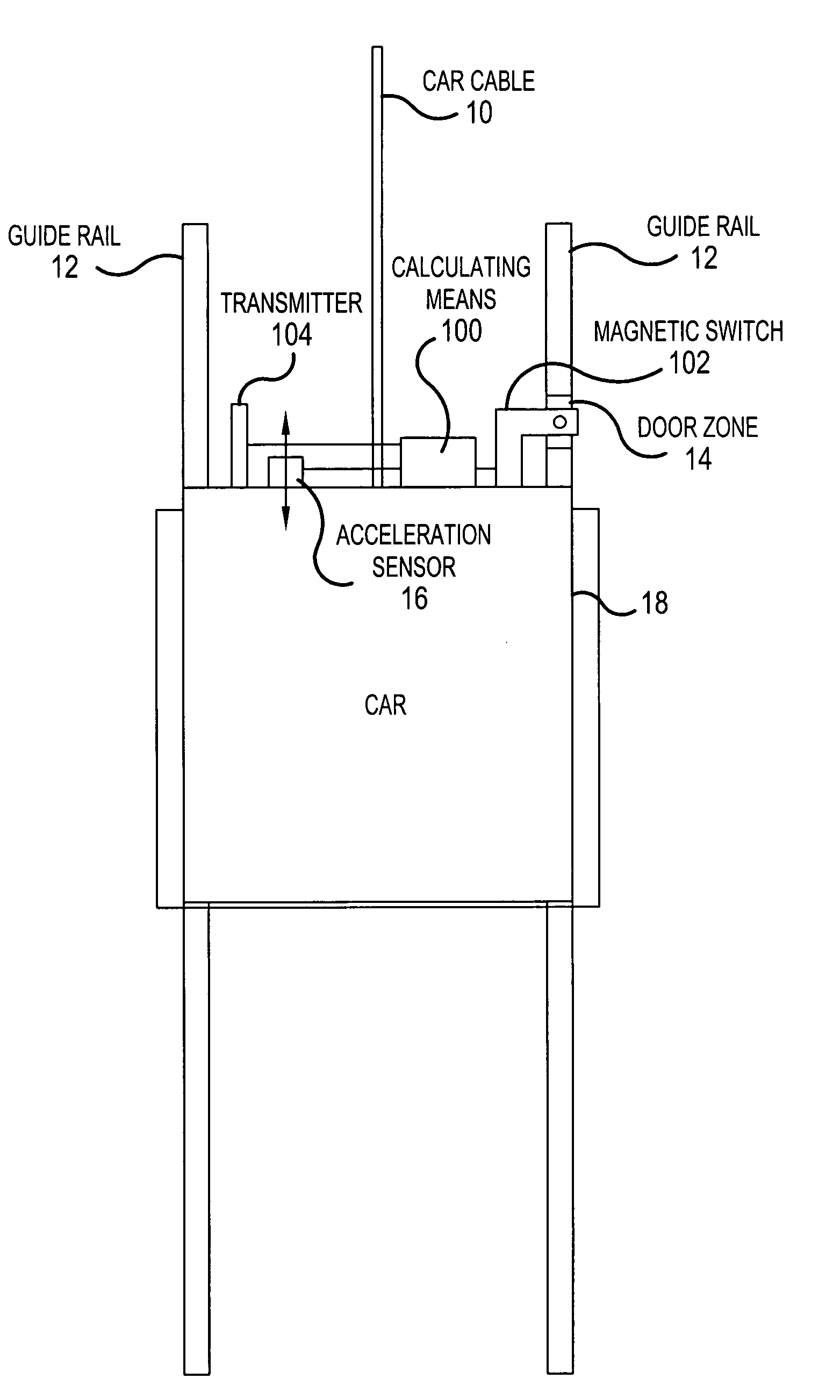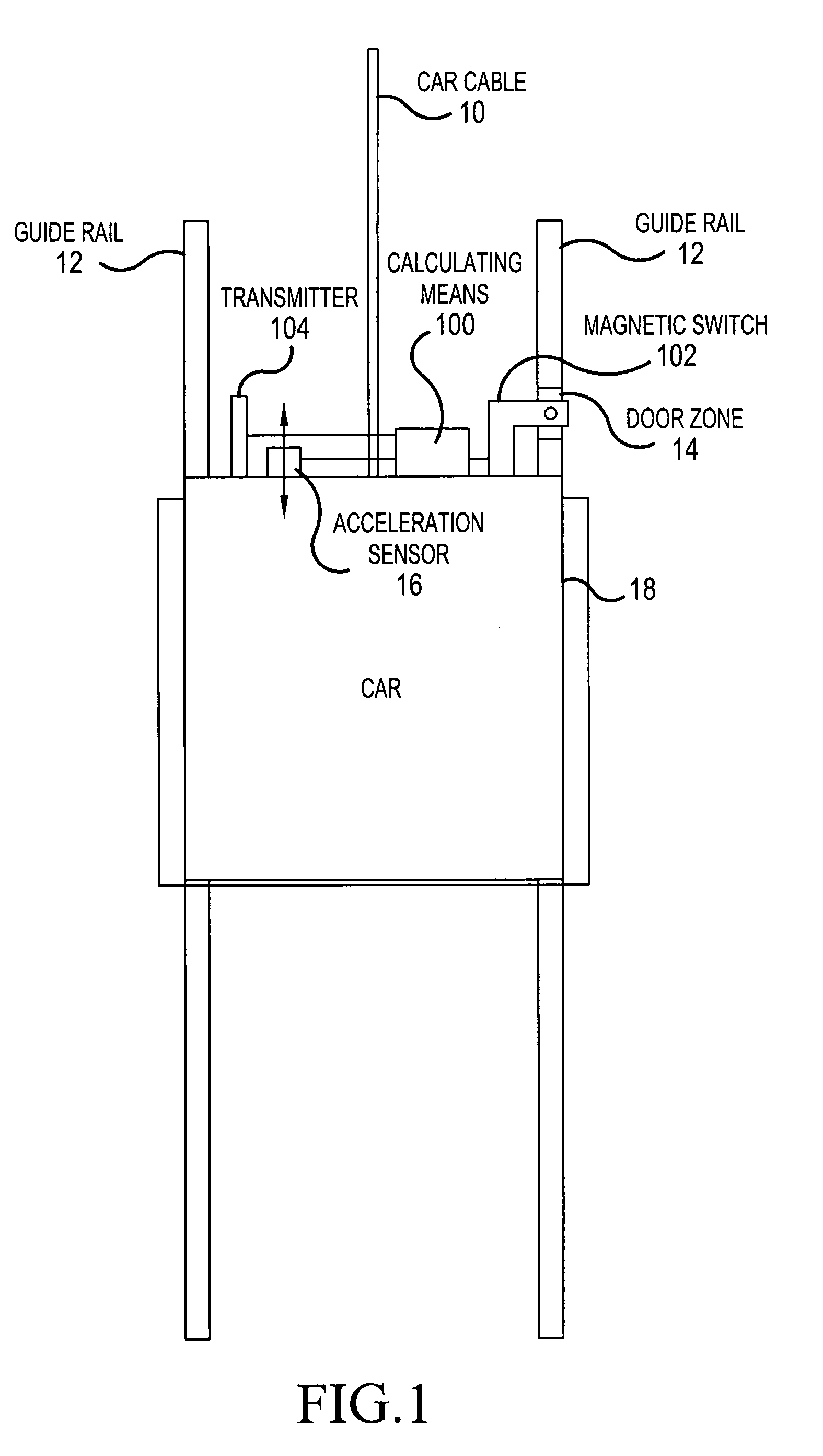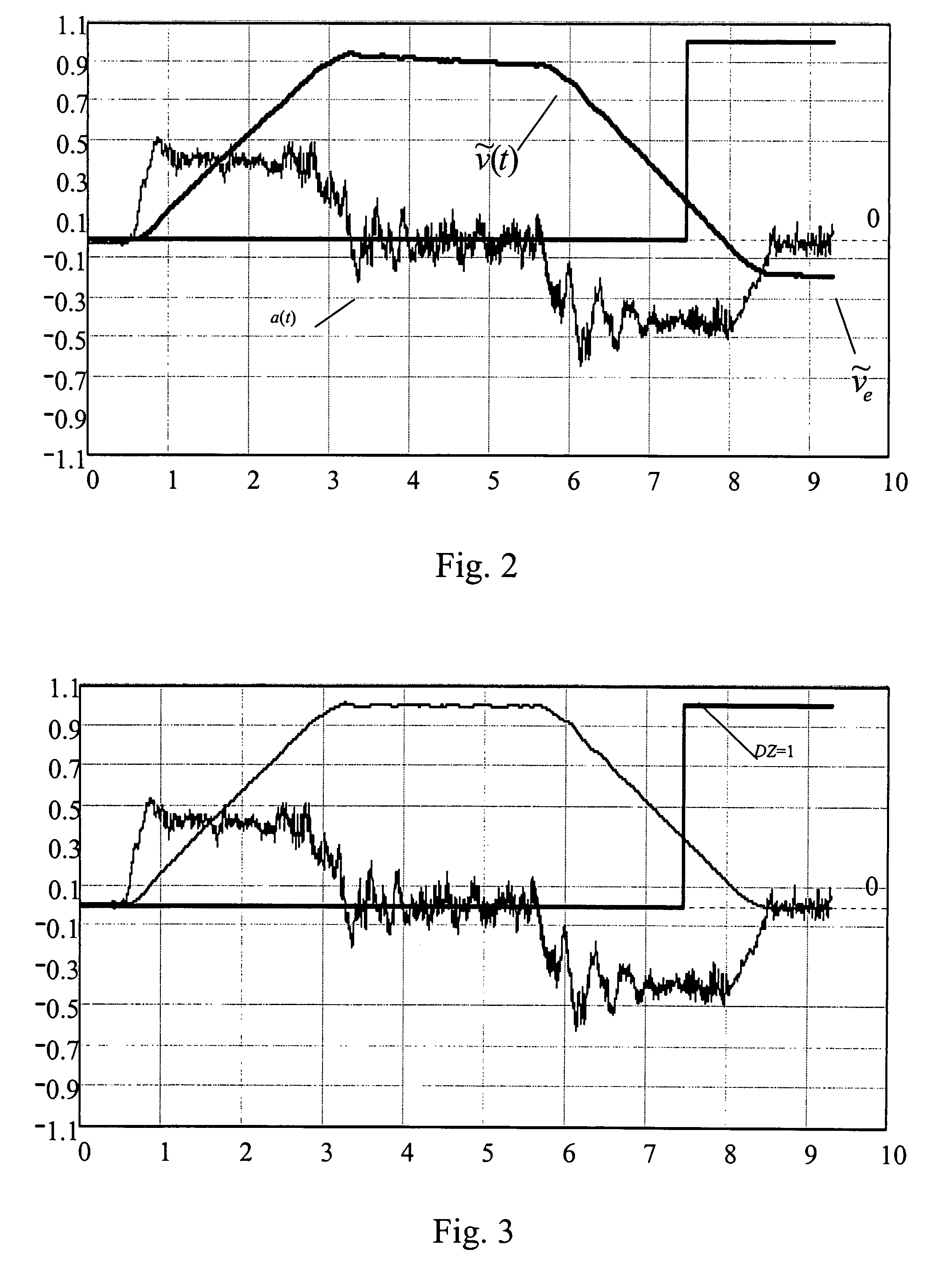Method and system for measuring the stopping accuracy of an elevator car
a technology for measuring the stopping accuracy and elevator cars, which is applied in the direction of elevators, electric motor speed/torque regulation, hoisting equipment, etc., can solve the problems of inability to integrate monitoring and monitoring systems into elevator systems, inaccuracy of stopping elevator cars, and something wrong with stopping control
- Summary
- Abstract
- Description
- Claims
- Application Information
AI Technical Summary
Benefits of technology
Problems solved by technology
Method used
Image
Examples
Embodiment Construction
[0042]FIG. 1 presents an elevator system according to the invention. An elevator car 18 controlled by a car cable 10 moves along guide rails 12. Installed on the elevator car 18 is an acceleration sensor 16, which is used to measure vertical acceleration of the elevator car 18. The acceleration sensor 16 can be installed on the elevator car 18 expressly for an embodiment of the invention or alternatively the invention can be implemented utilizing an acceleration sensor already existing on the elevator car. In addition, arranged on or near the elevator car 18 are calculating means 100 for the calculation of the distance of the elevator car from the edge of the door zone on the basis of the measured acceleration values. The calculating means 100 are implemented using e.g. a processor and a memory arranged in connection with it or completely via software.
[0043]At every floor, a device or arrangement indicating a door zone 14 is installed. The door zone 14 can be E.g. marked by upper an...
PUM
 Login to View More
Login to View More Abstract
Description
Claims
Application Information
 Login to View More
Login to View More - R&D
- Intellectual Property
- Life Sciences
- Materials
- Tech Scout
- Unparalleled Data Quality
- Higher Quality Content
- 60% Fewer Hallucinations
Browse by: Latest US Patents, China's latest patents, Technical Efficacy Thesaurus, Application Domain, Technology Topic, Popular Technical Reports.
© 2025 PatSnap. All rights reserved.Legal|Privacy policy|Modern Slavery Act Transparency Statement|Sitemap|About US| Contact US: help@patsnap.com



